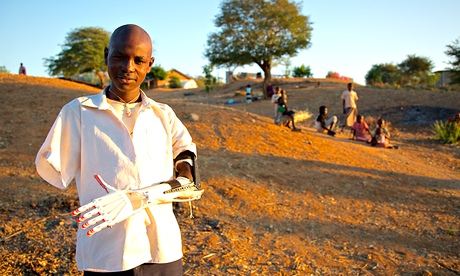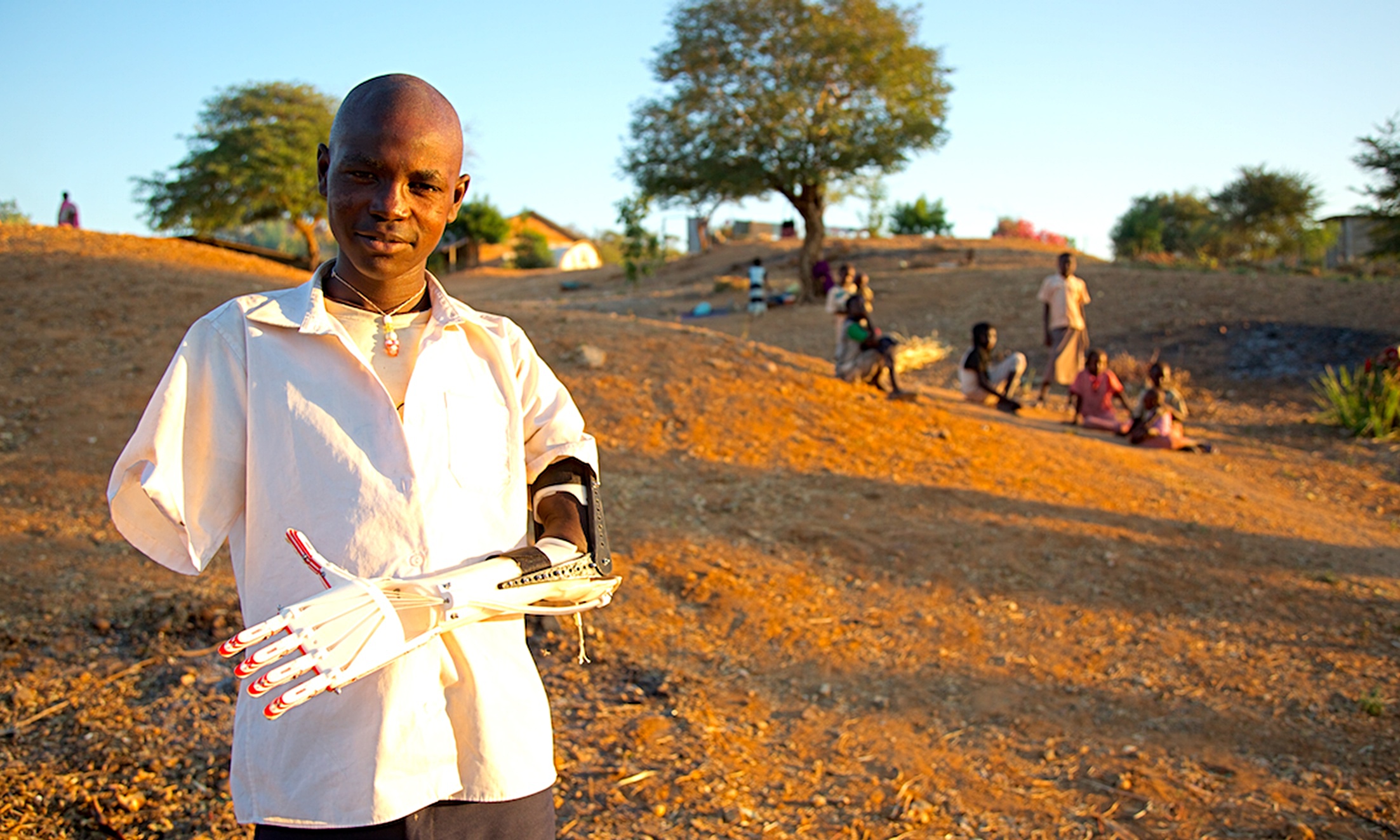In warring South Sudan, you must trade your limbs for your life. At least, this was the reality for Daniel Omar, who in March 2012, at the age of 14, embraced a tree trunk to shield himself from a bomb’s blow, and stepped away without his hands. Aware of the burden he would place on his family, in 2012 Omar told a Time reporter that he would rather have died when the government’s Antonov aircraft dropped its lethal cargo.
Seeing this declaration on paper shocked Mick Ebeling, who was then several thousand miles away in Los Angeles. The Californian is the founder of an American startup called Not Impossible Labs, a non-profit organisation that builds open-access devices to assist people facing seemingly insurmountable physical challenges. “I’ve got three little boys,” says Ebeling. “It was hard for me to read a story about a young boy who had lost his arms.”

Despite the fact that tens of thousands have lost their arms and legs to the scything shrapnel from bomb blasts in South Sudan, providing prosthetics is not a priority for the many humanitarian organisations there, at least not yet. “Médecins Sans Frontières is principally an emergency organisation,” says David Nash, head of its mission in South Sudan. “At the moment, it’s a case of being able to find the people who need lifesaving.” But for the sake of South Sudan’s future, access to affordable prosthetics must be welcomed too, he adds.
In November 2013, Ebeling travelled to Sudan for a month, hoping to find Daniel and build him an arm. He took with him printers, spools of plastic and cables. The 3D printers that create the prosthetic’s plastic parts make the device seem hi-tech, but the resulting arm is really just a simple, mechanical device. The arm works by using movement to trigger cables, threaded throughout the plastic structure like ligaments. When the user flexes and bends the remaining portion of their arm, this motion tenses the cables, which in turn curl and uncurl the fingers at the tip.
There are situations that the technology can’t remedy, because the prosthetic has to be attached to something substantial. “With the technology we currently have it’s hard to help people with no arm left,” says Elliot Kotek, co-founder of Not Impossible Labs. “There needs to be at least a little bit of a stump.” But from the 50,000-plus amputees in South Sudan, many of whom are young people, a sizeable number could be helped.
The project was named “Project Daniel” from the start, but there never was any certainty that they would even find Daniel. The teenager lived between the Yida refugee camp in South Sudan and his home in the Nuba Mountains, a disputed territory that has long suffered the abuses of warring factions and government bombing.
Then there was the worry that if they did find him, he might not be receptive. “We thought: ‘Maybe he doesn’t want to get an arm from this tall, bald, white dude,'” Kotek laughs, referring to Ebeling. “‘Maybe he’s fine as he is.'”
Indeed, even though he did sign on, Daniel, now aged 16, proved reclusive at first, peeking only occasionally over his shoulder at the foreigner who had come to build him a limb. But once the prosthetic – which takes a few days to make and costs £60 – was fitted, that changed. “It was a pretty amazing thing to see this boy come out of his shell,” says Ebeling, recalling the moment Daniel picked up a spoon for the first time since he had lost his hands. “Getting Daniel to feed himself was a highlight that was right up there with watching my kids being born.”
Ebeling’s other aim in Sudan was to share the project with the other person he had read about in the Time article, Dr Tom Catena, who operated on Daniel’s arms and works as the only qualified amputator for miles around. He, too, was keen, and Ebeling left the boy, and the community, receptive and enthusiastic about the project. But he still feared the arm he had built might be a one-off. His concerns were unfounded. “By the time I landed in LA and switched my phone back on, I had an email from Dr Catena saying: ‘The guys finished two arms while you were up in the air.'”
Since Ebeling has returned home, one prosthetic a week has been printed, thanks to two 3D printers he left behind. The machines sit humming industriously – mostly at night when it’s cool enough for them to work. The printed parts are then collected by eight local people trained to operate the machines, assemble the arms, and customise them for recipients.







